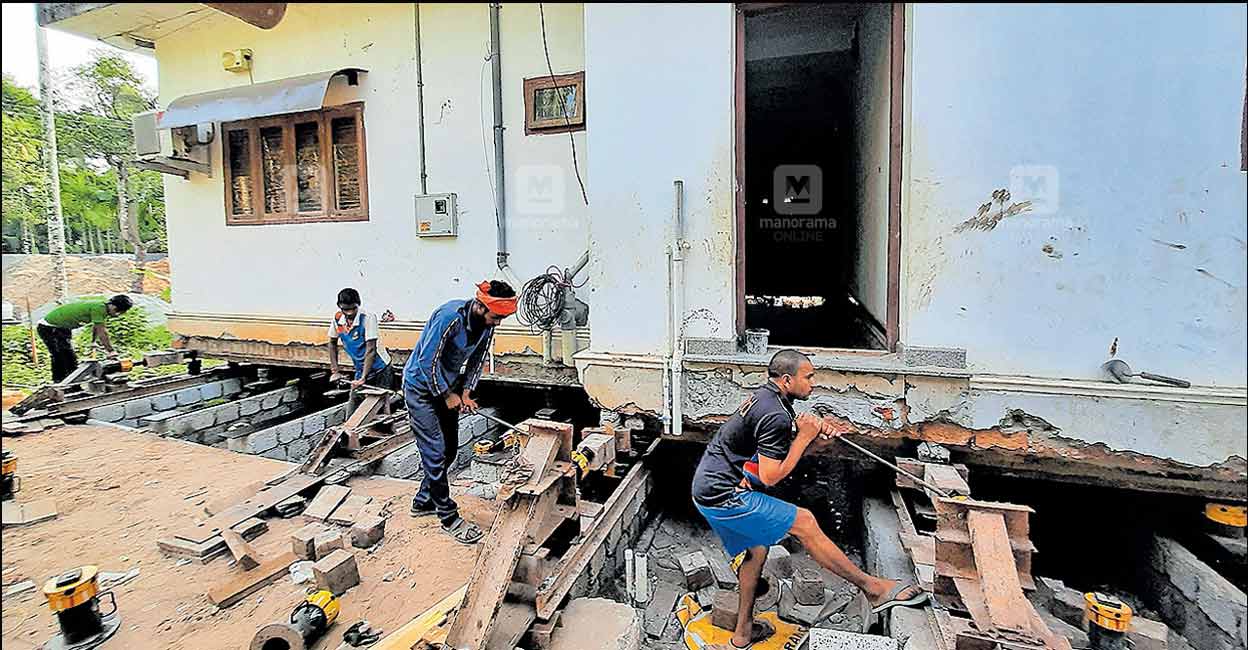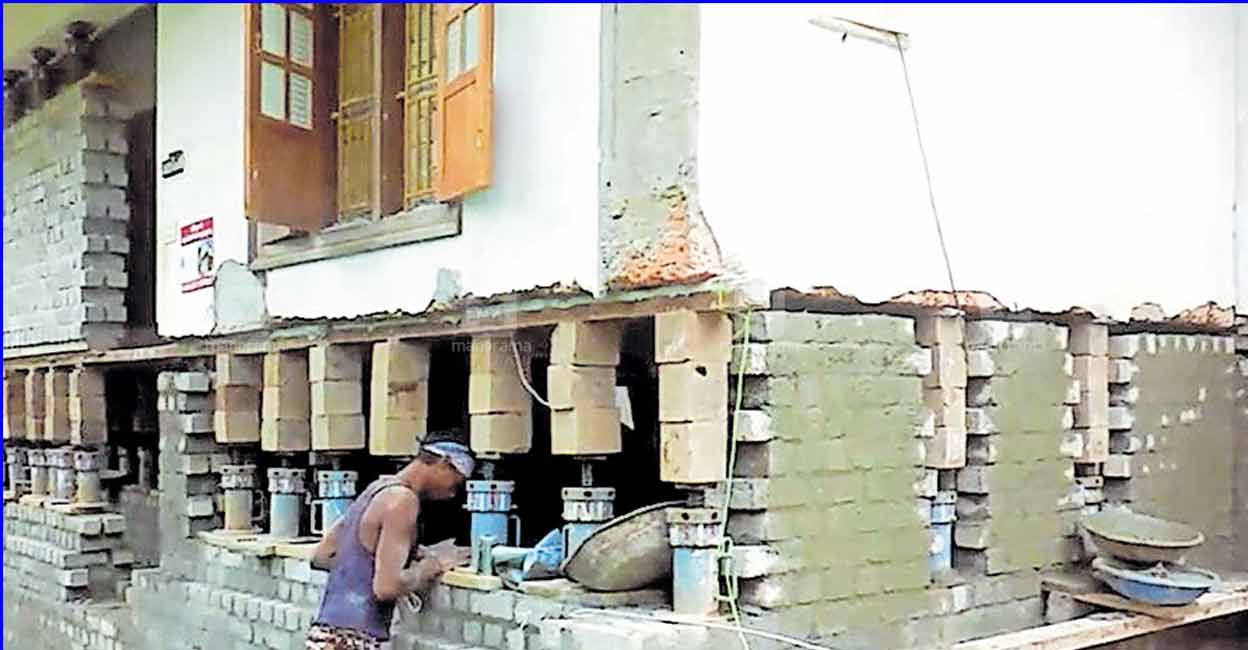Is lifting houses lucrative than building new structures?

Mail This Article
The deluge of 2018 had wreaked havoc on countless homes and buildings, especially the ones standing in low-lying areas. While some people pulled down their homes and rebuilt them at a significant height, others chose to sell their houses and property in order to move to areas that aren’t flood-prone. However, now, people are aware of the latest technology where the house could be lifted safely to prevent the flood waters from gushing inside. Interestingly, this growing trend has led many construction companies and contractors to offer house-lifting services.
Why are houses lifted?
Usually, people resort to house lifting when the foundation has become weak or if the house is below the road level. However, in Kerala, houses in flood-prone areas and the ones that stand on grounds that aren’t sturdy enough are lifted. Houses that were flooded for days during the consequent monsoon seasons could get weaker. The bricks on the lower layers would absorb water and would retain this moisture for years, making the structure weak and dangerous too. Lifting could make such homes sturdier and more durable.
Financially lucrative?
As per the current construction rates, it would cost at least Rs 2000 per square foot to build a new house. However, it would cost only one-fourth of this to easily and safely lift the house. Moreover, you need secure all the legal documents in order to pull down an existing structure and build a new one. The water and electricity connections have to be disconnected during the construction time and then they have to be reconnected later. Besides, lifting the house takes half the duration that takes to construct a house from scratch.

Straightening slanted houses
Indoor fountains and water bodies could eventually weaken the foundation as the mud slips from beneath. These houses may slant to one side or develop cracks in the walls. Such homes could be lifted by supporting the structure using levers.
No need for a concrete belt
There is no need to add a concrete belt if the foundation is built using hard rocks. Houses that are built at least three decades ago do not usually have concrete belts. These homes that are constructed using cement and sand from the rivers are often sturdier than modern houses. So, it is easier to lift such houses. In case the structure doesn’t have a belt, it is possible to add one while lifting the house. Moreover, houses built using any kind of materials like bricks, laterite stones, or cement blocks could be easily lifted using this modern technology.
Column/ beam houses
While lifting houses built using columns and beams, the lower part of the existing pillars would be demolished after constructing new supporting pillars. Then the irons rods in these parts would be cut and removed. As the lifting process is completed, the rods on both sides would be attached and concreted before re-building the pillars. This method wouldn’t affect the strength or quality of the columns or plinth beams on the foundation. Moreover, it would only make the foundation and the structure stronger than before.
How high can it be raised?
Usually, the houses are lifted up to five feet. The average height of a single-story house is ten feet. If the house is raised, then the height of the house would be fifteen feet. In such a case, a belt would be added between the layers. Most houses, however, are lifted up to four feet. The growing technology enables to revolve of a structure so that it faces a different direction. Moreover, a house could be completely moved to a different location by keeping everything intact. For this levels that have wheels are used. Special lines that can carry humungous weight would be paved until the new location in order to move the house. Before moving the house, a strong foundation that covers the area of the house should be built at the new location. The house would then slowly be moved, like a ginormous train, to this location. This indeed is a risky process and is extremely expensive too. So, you could avail of this method only if it is absolutely necessary.

Guaranty
Most companies that do house lifting jobs often enter into a contract with the house owners before they begin the work. In the contract, they take up the responsibility for all the damages that happen to the structure. The house is lifted after building a new foundation that compliments the weight of the structure. Usually, the companies give a lifetime guaranty for the sturdiness and durability of this foundation. However, it wouldn’t help if new additions are made to these structures in the future or if there is a pond or a water body on the plot. All these are included in the contract.
Rate for lifting
Most companies have fixed a slab rate for the lifting works. Up to 500 – 1000 square feet is considered as a single slab. Besides, the height at which the house is lifted too influences the expenses. Usually, the works are done on the basis of labour contract. It must be noted that the expenses for machinery, materials and the labour charges too are included in this. The owner should purchase the materials that are required for the work. A special type of cement blocks, M Sand and cement are used for the construction. Besides, the machinery that is needed to weld in the rails and the materials required for the final plastering too should be purchased.
The construction of the new foundation would be done simultaneously with the lifting works. For instance, if the house is raised to three feet, then the construction of the foundation would begin when the structure is raised up to a foot. After raising it to three feet, the height of the foundation would be increased before finishing off the work. All these jobs are done in steps. The levers would be removed only after the owner inspects all the sides of the house and give his approval. Finally, the gap between the foundation and the structure would be filled.

What should the owners do?
After the contract is finalised, the ground floor should be emptied before the stipulated date. Cupboards that are fixed, door frames and mosquito nets on the windows too should be removed. If there is an upper floor, these things could be stored on this floor. Besides, the owners should ensure that water supply is available at the location. In most cases, the labourers would be staying at the site itself. So, necessary arrangements should be made.
Duration
If the house is raised up to five feet, then the work would be completed in five stages. It would take up to fifty days to complete the work. The contractors often promise forty days to raise the structure up to four feet and thirty days to raise up to three feet. However, the work would be completed earlier than this.

The rate for single and double story
The rate for raising single-story and double-story houses differ. Double-story homes are heavier and are vaster in area. So, the machinery used to lift such houses too would be different. Besides, the foundation has to be built with extra care and sturdiness which might increase the expenses. But, it must be noted that the rate decreases as the slab increases. So, it could be said that lifting double-story houses may not be exorbitantly expensive. The number of people who choose to lift their houses, especially after the megafloods, has gone up. Modern and smart technologies like this would enable people to avoid relocating to different places from the flood-prone areas or rebuilding new houses in place of damaged structures.
(Information courtesy: Ajeesh Ashraf, Aashirvad Building Lifting and Constructions Private Limited)

